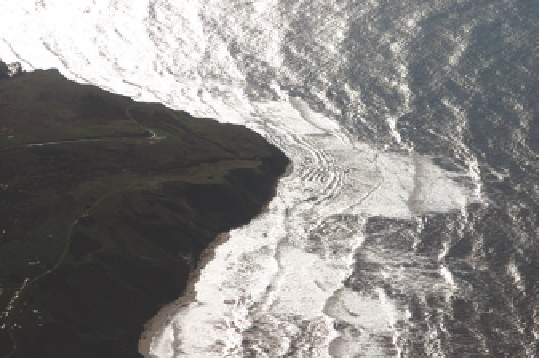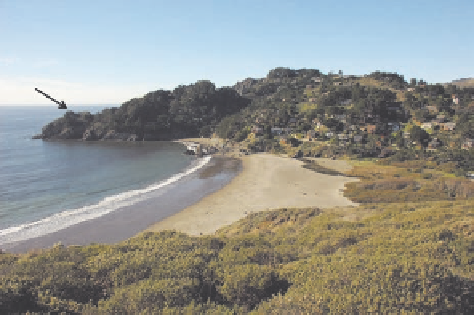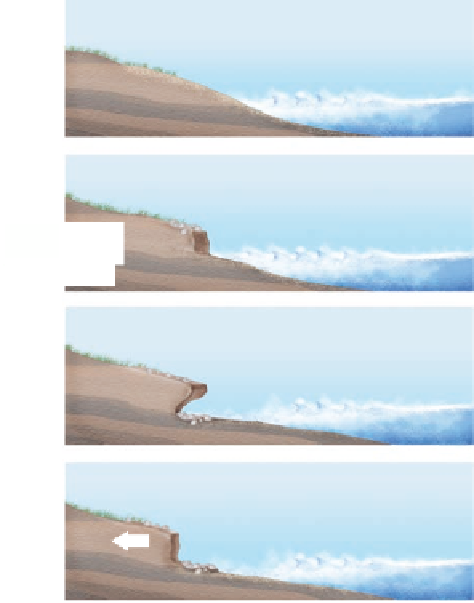Geoscience Reference
In-Depth Information
Pocket
beach
Headland
Bay
Wave energy
focused on
headland by
refraction
Wave energy
dissipated
in bay
(a)
(b)
Figure 19.14 Headland erosion.
(a) A model showing how
waves refract around headlands, causing the formation of a
pocket beach in the intervening bay. (b) Wave refraction along
the coast of California. Notice how the waves are bending around
this headland? (c) Pocket beach on the Pacific Coast north of San
Francisco. This beach formed when sandy sediment eroded from
headland in the background (arrow) and behind (south) the view
was funneled into this small embayment.
(c)
(a) Noneroded rocky shoreline
(b) Formation of vertical bluff
Eroded vertical face
Wave-cut platform
(c) Waves cut notch into base of cliff
Rock overhang
Notch
(d) Overhang collapses, bluff retreats
Direction of
retrogradation
New wave-cut platform
Figure 19.16 Bluff formation and retreat.
(a) Waves attack a
noneroded rock outcrop. (b) With time, the waves cut a vertical
bluff into the rock. (c) During strong storms or relatively high wa-
ter, the waves cut a notch into the lowermost rocks of the bluff.
(d) If the notch is cut sufficiently deep, the overhanging rocks in
the bluff collapse, causing bluff retreat.
Figure 19.15 Wave-cut cliff of Kilt Rock, Scotland.
This mas-
sive wave-cut bluff was eroded into basalt cliffs over time. Note
the waterfall in the foreground.



























